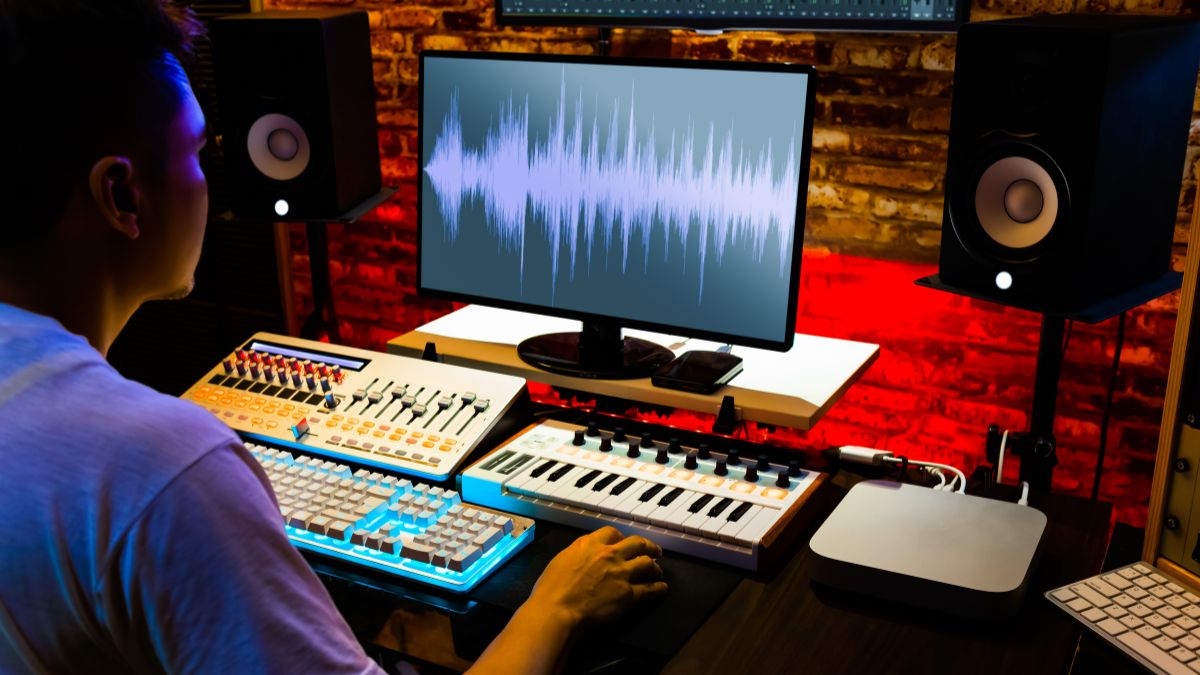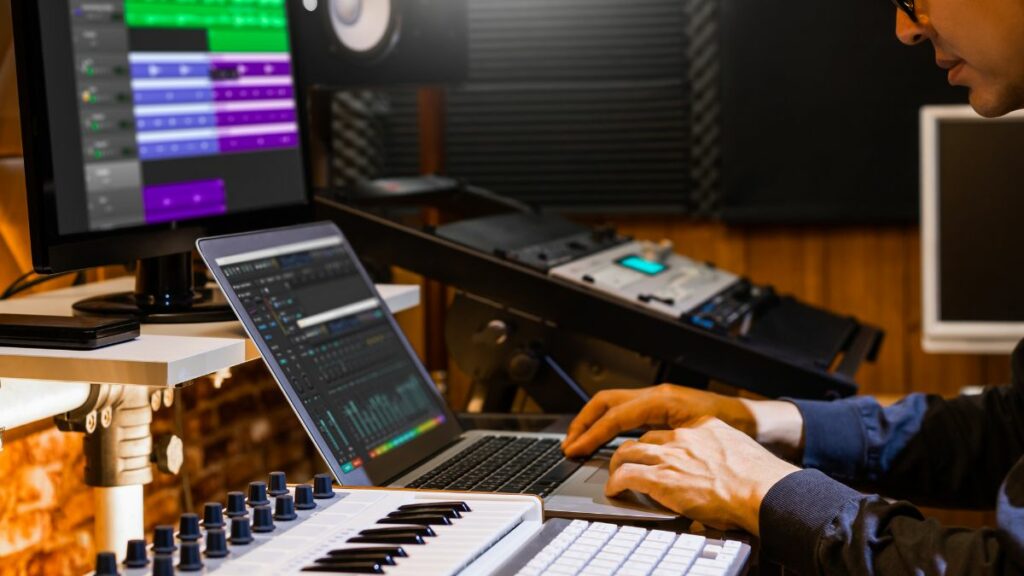There’s a moment when a half-finished song becomes a living thing: you mute the vocal, strip the bass, and suddenly the drums breathe like a new organism. That moment used to require an engineer with expensive tools—or the artist’s patience and a mountain of trial-and-error. In 2025, the same transformation can happen in minutes thanks to smarter separation—what a lot of people casually call the ai audio splitter or ai voice splitter revolution. But the headline isn’t just technology. It’s what creators do with it: release faster, collaborate better, and build a catalog that actually moves.
If you’ve ever Googled “how do you remove vocals from a song,” you’ve seen the jungle. Free scripts, dodgy plug-ins, and forum posts from 2013 promising one-click miracles. Here’s the real story artists are living now—no myths, no gatekeeping—just workflows that stick.
The new anatomy of a demo
Every modern demo is two things at once: an idea and a kit. The idea is the topline, the rhythm, the pocket. The kit is the raw material you can reuse—kicks, claps, hooks, a stray harmony that becomes a new chorus. When you run a bounce through an ai instrumental splitter (some folks call it a vocal and instrumental splitter free when they’re hunting trials), you’re not just making karaoke. You’re harvesting parts.
That’s why the language of separation has shifted. People still say “remove vocals” or “eliminate voice from a song,” but the pros talk in pieces: acapella, instrumental, drum bus, bass stem, harmonic bed. Instead of treating a demo like a fragile vase, they treat it like Lego.
If your project lives on your phone or laptop, the fastest path is to turn your mix into stems that can move between DAWs, collaborators, and content formats. That’s where a dedicated tool helps: multi-stem separation that’s good at keeping transients intact and the voice clean. You want the vocal to sound like it belongs in a session, not like it escaped a submarine.
→ Try it on one of your demos: pull a track into separate pieces
“Free” versus “good”: the truth about a background music remover
Search trends make it obvious: people want a background music remover or a free vocal remover. Sometimes you just need a quick instrumental to freestyle over or a bare vocal moment for social. Free is fine for that. But the moment you care about quality—say you want the acapella to survive EQ, compression, and a light saturator—pay attention to artifacts. Tinny resonances around 2–4 kHz, warbly reverb tails, a ghost of the snare living under the words… these are the tells.
A solid ai audio splitter minimizes those artifacts by leaning on models trained for musical material (not generic speech). It also gives you the practical stuff: correct sample rate retention, phase-coherent stems, and predictable latency. That matters the second you hand a piece to a collaborator—or you decide to re-arrange the entire chorus around the acapella.
If you’re in “free first” mode, perfect. But assume you’ll graduate. The cost of a better separation that saves you three hours of cleanup is close to zero compared to the time you recover.
The creative case for removing vocals (and everything else)

Traditionally, “remove vocals from a song” meant one of two things: karaoke night or clearing space to write. Now it’s a creative discipline. Here are five patterns I keep hearing about when I interview producers and rappers working fast:
- Acapella as a mood board. Yank the voice, layer it with a pitched-down duplicate, add a little chorus, and suddenly you’ve got a hook texture that feels like a synth pad with humanity.
- Drums for decision-making. Pull the drum stem and listen on a phone speaker. If the pocket doesn’t move you without bass or melody, the groove isn’t there yet.
- Bass truth serum. Isolating the low end tells you if your subline sings or just sits. Fix it early, not after a hundred plug-ins.
- Instrumental for content. That 20-second instrumental loop is a duet magnet. Post it with a caption asking for 8 bars, and riders will flock.
- Harmonic bed for topliners. A clean chords-and-pads stem unlocks collaboration. Send it to three singers and watch three songs happen in a weekend.
All of that becomes easier—and frankly more fun—when you can make an acapella in a click rather than reconstructing it with phase trickery.
Speed is a sound
Here’s the secret sauce: speed doesn’t only change timelines; it changes taste. If you can isolate a vocal, rebuild the drums, and bounce a new instrumental in under an hour, your ear starts favoring bold decisions. You stop hoarding ideas. You commit faster, which makes collaborators commit faster. Momentum has a tone, and you can hear it in artists who release twice a month.
That’s why the best creators don’t just rely on separation. They present their drafts in a way that lands on real speakers—phone, car, cheap earbuds—without forcing collaborators to crank the volume. After you split a track, run it through a smart finishing chain so your people hear intention instead of mud.
→ When your bounce needs to feel finished: give your track a platform-ready finish
The “free vs pro” decision tree (for real this time)
If you’re asking, “Do I need to pay?” here’s a brutally honest rubric:
- Use a free ai audio splitter when:
You just need a quick instrumental for rehearsal, a background bed for a TikTok, or a rough acapella to test key and tempo. - Level up to a stronger model when:
You hear chirping artifacts on sustained vowels, hats bleed through your vocals, or the bassline smears. Also level up if you intend to pitch, time-stretch, or process the stem heavily—weak extractions fall apart under stress. - Protect your time by mastering your demo before feedback:
You don’t need perfection, but you do need modern loudness and basic translation so people give notes on the song, not the volume.
Collaboration lives where the stems are
The real unlock is social. The artists who cook quickest don’t wait for inspiration—they create rooms where inspiration is inevitable. That could be a private Discord, a WhatsApp thread, or a dedicated platform where people actually speak the language of stems. You want a space where someone says “double the pre, the snare is stepping on the sibilants” and nobody blinks.
In those rooms, separation is currency. Send an acapella, ask for a counter-melody. Share a drum stem, request a swingier hat. Offer an instrumental, invite a verse. The faster you exchange pieces, the more likely you’ll finish a track this week rather than next year.
The three-day release loop
Day 1: Split your favorite demo with a reliable ai voice splitter. Keep acapella, drums, bass, and harmonic bed. Arrange fast; cut anything that competes with the hook.
Day 2: Build an instrumental variant for content, and a second arrangement that lives at 30 seconds for social.
Day 3: Do a quick polish. You’re not done until the phone, buds, and car agree. Then share with your circle and iterate once.
→ Step one, always: pull a track into separate pieces
→ Finish without flattening vibe: give your bounce a platform-ready finish
→ Share, get notes, line up a feature: a circle that speaks stems
The future of unmixing isn’t karaoke. It’s creativity at speed. Say goodbye to fragile demos. Say hello to a toolkit disguised as a song—and the confidence that you can remake it twice before dinner.



